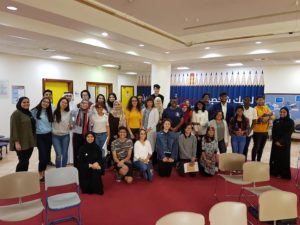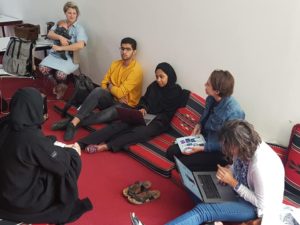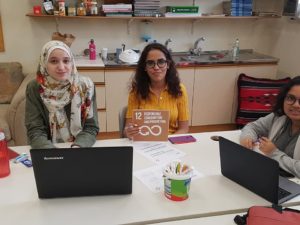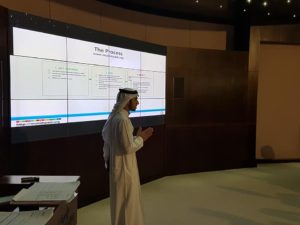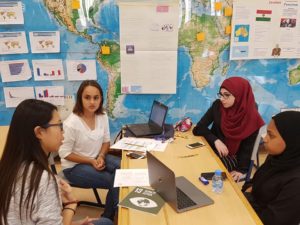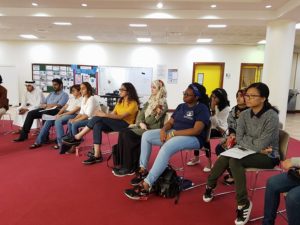By Lisa Martin
__________________________________________________________________________
In March, I found my way to Addis Ababa, Ethiopia. I came on a mission-to find an emerging MUN Club to collaborate with and bring to THIMUN Qatar 2019. Lebawi Academy’s new MUN program had huge aspirations, and I wanted to meet the MUN Director and their students. The Lebawi Academy MUN Club did not disappoint, and I was treated to a spectacular day, meeting some incredible students, teachers and school administrators. By the time I left I knew I had located the perfect school with which to collaborate, and I will leave it to the Lebawi and Qatar Academy Doha students to share their stories as their emerging collaboration develops.
I spent the morning visiting different clubs at the school: meeting with the student government, the girl’s empowerment club, the girls who code. The morning was filled with incredibly engaged students sharing their projects and stories, and by lunch I was already overwhelmed by the positive energy. It was a day of many superlatives, from the excellent tour of the school to the amazing lunch, and a visit to the school’s small special needs classroom, but there was one interaction with students left a profound impact on me, and has informed some of my thinking on MUN Impact moving forward.
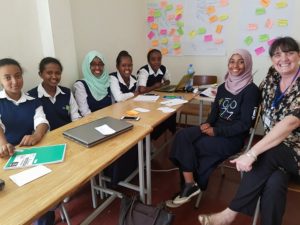 Gathered in a small classroom, I listened to this articulate group of young women explain project after project they were working on. From maternal health and FGM to access to higher education and technology innovation projects they were working on. I began to see a pattern…each of the projects they were describing were related to an SDG, and in almost all cases, a specific target. I finally stopped the conversation and said “Do you REALIZE that what you are doing, all of these programs, are supporting the SDGs?” And after some silence I asked “How many of you know what the SDGs are?” A few tentative hands were raised, but generally speaking, this was a term that had little currency with the group.
Gathered in a small classroom, I listened to this articulate group of young women explain project after project they were working on. From maternal health and FGM to access to higher education and technology innovation projects they were working on. I began to see a pattern…each of the projects they were describing were related to an SDG, and in almost all cases, a specific target. I finally stopped the conversation and said “Do you REALIZE that what you are doing, all of these programs, are supporting the SDGs?” And after some silence I asked “How many of you know what the SDGs are?” A few tentative hands were raised, but generally speaking, this was a term that had little currency with the group.
I went on to explain that quite unknowingly, they were part of a huge global movement, an international commitment by the United Nations to address multiple complex issues that underpin sustainable development. Did they know they were part of something that was actually a massive global undertaking? They had not, they told me, but a current of energy pulsed through that room in what teachers know to be those exquisite, teachable moments. And when I asked if they wanted to be connected to this larger movement, and to act as role models within it, the answer was ‘Of course’.
In my final meeting that day with the school leadership, I shared my observation on this unintentional SDG alignment. I commended them on the service ethic that seemed to be a part of every aspect of the school and suggested that there might be real value in taking a closer look at their programs and searching for further SDG alignment. But it was the Assistant Dean of the School who put this SDG discussion into context. He said the the average person in Ethiopia saw the SDGs and something designed by distant elites, something that had little relevance to the average person. And yet, ironically, the entire school, with its service ethic, was deeply committed to those very goals and was working to solve them every single day!
It led me to ask myself a number of questions. How many young people were engaged in supporting the Goals without knowing it? How many school programs could be linked/aligned directly to the SDGs by simply evaluating their programs? Is simply knowing that your work supports the Goals of value in and of itself and is there synergy that comes from identifying your initiatives as part of a larger movement? How could this enormous chasm between local action and goals formulated by ‘distant elites’ be bridged? Was there a role for young people to play in narrowing this gap, making the Goals accessible in some kind of meaningful way to local communities? Could students mentoring students be part of this solution? Could MUN be a vehicle for delivering SDG awareness and a space for young people to engage in UN mandates (content), their communities (through action) and by collaborating with one another to bring the change needed to make the Goals attainable?
I think Model UN has an enormous role to play in bridging this chasm. This high school aged demographic, eager to work to support the Goals and larger mandates of the United Nations, seems to be both underutilized and only minimally engaged by the UN itself. When the different rules of procedure and the false dichotomy of what makes MUN, well ‘proper MUN’ is removed, and the competitiveness gets stripped away from conferences, something very different emerges. This is what MUN Impact has discovered: a groundswell of enthusiasm for ‘doing something’ with the knowledge gained through MUN participation. If we can purposefully connect MUN delegates around the world to ask these bigger questions about successfully attaining the Goals, and to facilitate opportunities to work together, something powerful will emerge.
The future of MUN will be found in places like Lebawi Academy. With the help of MUN Impact, this club and others like it can pivot together into something more powerful than just debate. This is a global community ready to lean in and support the UN through action. Now is the time to take words off a resolution and apply them to the challenges we face. I think our delegates are ready for this challenge.
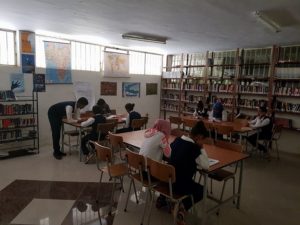
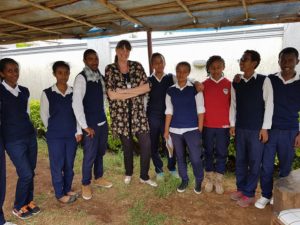
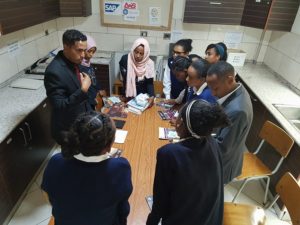
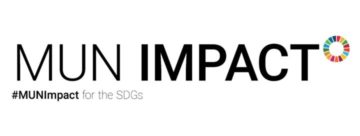
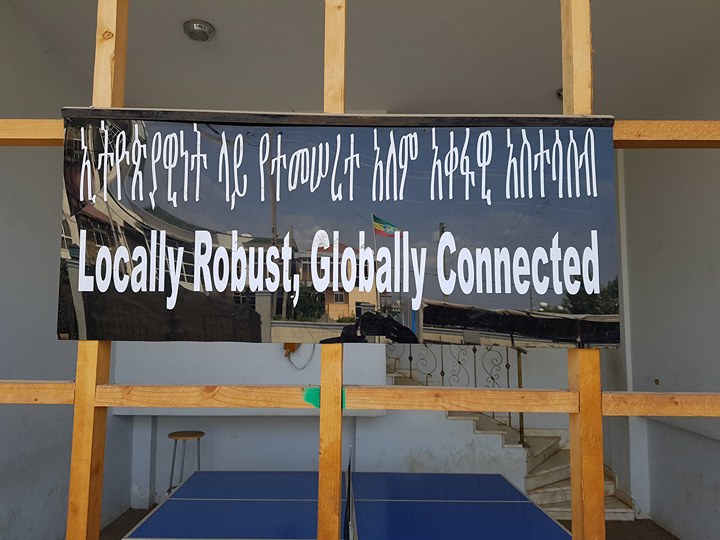
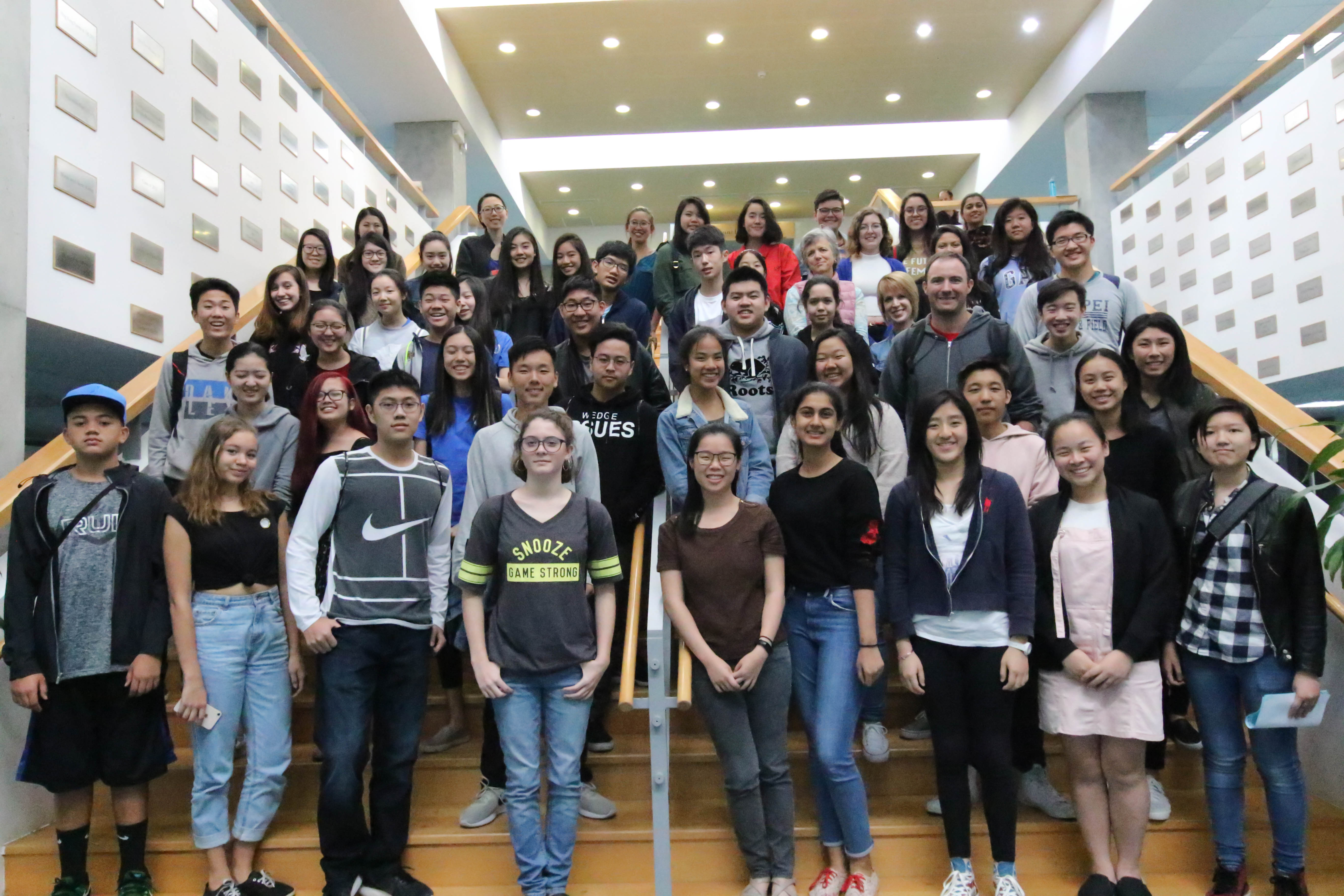
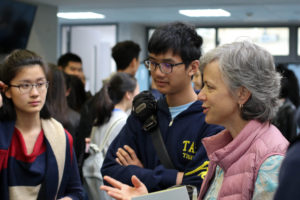 On April 7, 2018, the Girl Up Club in Taipei American School (TAS) hosted our second annual Leadership Summit. Our high school club is registered as a chapter of Girl Up which operates under the umbrella of the United Nations Foundation. As we reflected on the intent of the club’s founding and began our work in hosting a summit that would attract over 100 participants, we realized the significance of our journey and how closely it aligns with MUN-Impact’s process of Inspire, Dive In, and Impact.
On April 7, 2018, the Girl Up Club in Taipei American School (TAS) hosted our second annual Leadership Summit. Our high school club is registered as a chapter of Girl Up which operates under the umbrella of the United Nations Foundation. As we reflected on the intent of the club’s founding and began our work in hosting a summit that would attract over 100 participants, we realized the significance of our journey and how closely it aligns with MUN-Impact’s process of Inspire, Dive In, and Impact.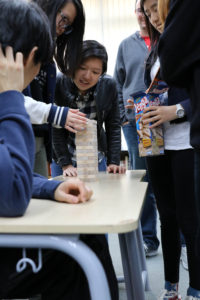 Through the two years of our running this summit, our participation numbers jumped from 60 to over 100, including both student and faculty workshop presenters and event attendees. Most recently, we were also able to invite speakers such as the Ambassador of Belize, as well as women leaders of law and technology firms Paragon Legal and Intel to talk about how gender issues are tackled on both the global and the personal level.
Through the two years of our running this summit, our participation numbers jumped from 60 to over 100, including both student and faculty workshop presenters and event attendees. Most recently, we were also able to invite speakers such as the Ambassador of Belize, as well as women leaders of law and technology firms Paragon Legal and Intel to talk about how gender issues are tackled on both the global and the personal level. 
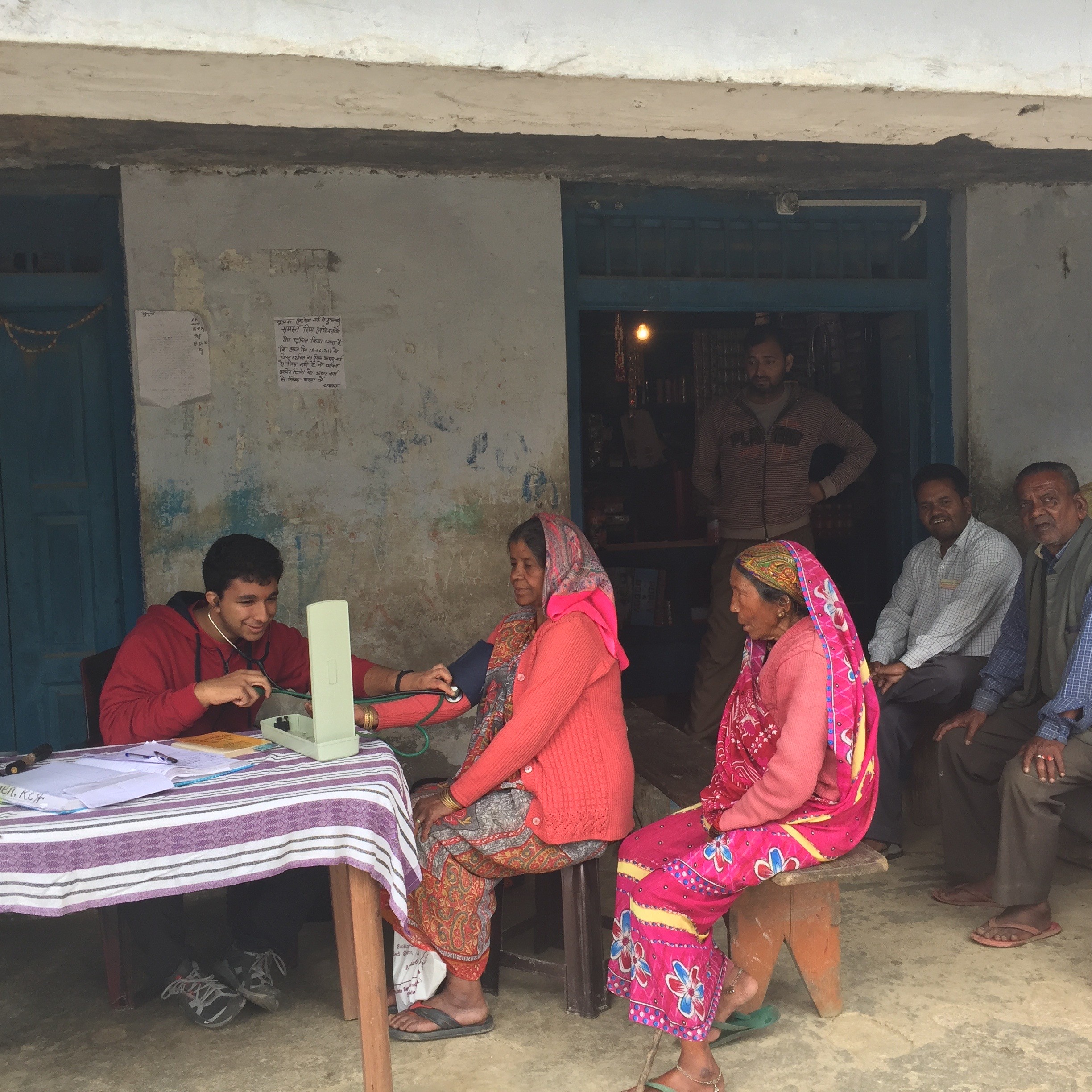
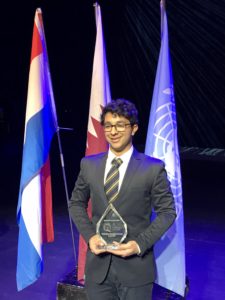 Every year the THIMUN Qatar Peace and Service Award’ is given to a student deemed to have done outstanding humanitarian work in their community. MUN Directors attending the conference are asked to nominate one of their students for the award, and then the best student/delegate is unanimously chosen. It is presented at the closing ceremony of THIMUN Qatar. This year, 17-year-old Shreyas Rajesh, from the American Embassy School in New Delhi, received the award for the incredible work he has done in his school, but also in his country.
Every year the THIMUN Qatar Peace and Service Award’ is given to a student deemed to have done outstanding humanitarian work in their community. MUN Directors attending the conference are asked to nominate one of their students for the award, and then the best student/delegate is unanimously chosen. It is presented at the closing ceremony of THIMUN Qatar. This year, 17-year-old Shreyas Rajesh, from the American Embassy School in New Delhi, received the award for the incredible work he has done in his school, but also in his country.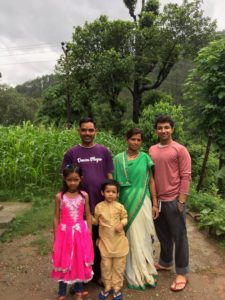 Shreyas initially got involved in community service with the schools MAD (Make a Difference) programme because he ‘felt a responsibility to give back’. He has spent the last three years doing volunteer work with the MAD Program teaching English and Social Studies concepts to slum children from a camp adjacent to AES. Many of these students have gone on to attend university. He has also written his own sophisticated curriculum to deliver the above education with such professionalism that it is going to be presented at the World Teaching Conference in Atlanta, Georgia under the title “Empowerment Can Create Genius” As well as that, he has volunteered with many NGOs such as Chirag, Mission Smile, Indian Head Injury Foundation. Interned with The Public Health Foundation of India for 6 weeks and is a Board Member of the Make-A-Difference Organization in AES. Described as a ‘humble, articulate, competent and socially aware student’ by his MUN Director Robert Givitch, Shreyas is a beacon of inspiration to all of those around him.
Shreyas initially got involved in community service with the schools MAD (Make a Difference) programme because he ‘felt a responsibility to give back’. He has spent the last three years doing volunteer work with the MAD Program teaching English and Social Studies concepts to slum children from a camp adjacent to AES. Many of these students have gone on to attend university. He has also written his own sophisticated curriculum to deliver the above education with such professionalism that it is going to be presented at the World Teaching Conference in Atlanta, Georgia under the title “Empowerment Can Create Genius” As well as that, he has volunteered with many NGOs such as Chirag, Mission Smile, Indian Head Injury Foundation. Interned with The Public Health Foundation of India for 6 weeks and is a Board Member of the Make-A-Difference Organization in AES. Described as a ‘humble, articulate, competent and socially aware student’ by his MUN Director Robert Givitch, Shreyas is a beacon of inspiration to all of those around him.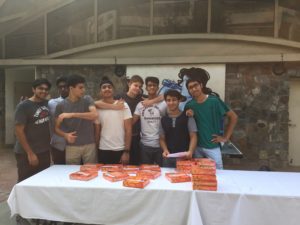 When asked about why he does Model United Nations, he said he ‘originally joined MUN for the same reasons that many middle schoolers do – to wear a fancy suit and travel to a new place. What made me really stay with the activity were the people I met and debates in which I participated.’ For him, MUN is all about ‘helping people become better public speakers, learning to recognize and accept different perspectives, and to work cooperatively while still ensuring their priorities as representatives of global countries are met.’
When asked about why he does Model United Nations, he said he ‘originally joined MUN for the same reasons that many middle schoolers do – to wear a fancy suit and travel to a new place. What made me really stay with the activity were the people I met and debates in which I participated.’ For him, MUN is all about ‘helping people become better public speakers, learning to recognize and accept different perspectives, and to work cooperatively while still ensuring their priorities as representatives of global countries are met.’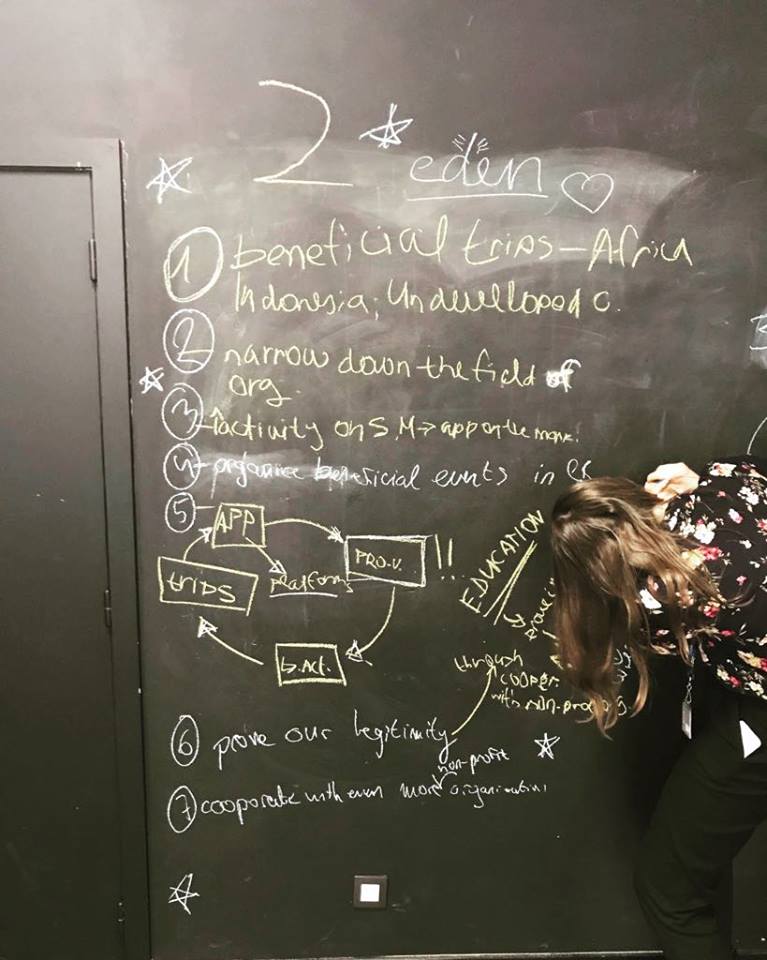
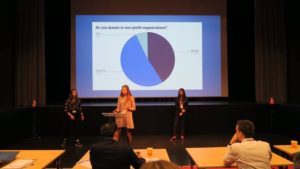 The SDG Inventory is a newly established tool from MUN Impact which aims to raise awareness of the Sustainable Development Goals. You might wonder that everybody in our modern and industrialized world is fully aware of the 2030 agenda and that when setting and establishing a school club occurs it is always with a vision to tackle one of the goals, nevertheless, opposite is the truth as we can hear from MUN Impact director Lisa Martin.
The SDG Inventory is a newly established tool from MUN Impact which aims to raise awareness of the Sustainable Development Goals. You might wonder that everybody in our modern and industrialized world is fully aware of the 2030 agenda and that when setting and establishing a school club occurs it is always with a vision to tackle one of the goals, nevertheless, opposite is the truth as we can hear from MUN Impact director Lisa Martin.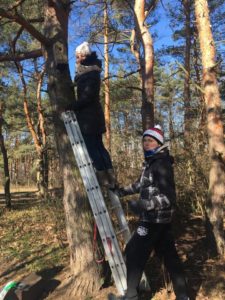 After thinking for a while I have chosen to be for the past two weeks in contact with a MIT Launch initiative led by Novy Porg students called EDEN Hope in Motion. Five brave students took the chance and risk of establishing a new organization in a very short time and promoting it on an international level during the last year and during the last week MIT session which was held in Brussels. EDEN Hope in Motion is aiming through its activities and online app which can be accessed on Android and hopefully very soon on apple, to spread awareness of urgent social and environmental issues and to connect the society with charities and NGOs, all around the world. It’s most recent aim is to organize events and trips which will support jeopardized communities all around the world.
After thinking for a while I have chosen to be for the past two weeks in contact with a MIT Launch initiative led by Novy Porg students called EDEN Hope in Motion. Five brave students took the chance and risk of establishing a new organization in a very short time and promoting it on an international level during the last year and during the last week MIT session which was held in Brussels. EDEN Hope in Motion is aiming through its activities and online app which can be accessed on Android and hopefully very soon on apple, to spread awareness of urgent social and environmental issues and to connect the society with charities and NGOs, all around the world. It’s most recent aim is to organize events and trips which will support jeopardized communities all around the world.
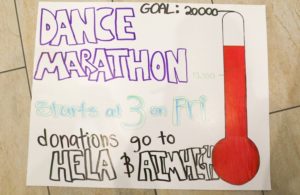 On February 9th, the students of John Burroughs School in Saint Louis, Missouri, USA convened in their community’s field house for an evening of celebration dubbed “Dance Marathon.” The biennial event, often viewed as a means to let loose by the students, is underscored by a philanthropic goal. This year though, the dancefloor had a distinctive feel, as the student body was supporting Hope for Education and Leadership in Afghanistan (HELA), an organization with which Burroughs has a storied history. The delegates of the John Burroughs MUN team have met with the HELA delegates on several occasions and have developed somewhat of a rapport. This is the heart and soul of Dance Marathon, assisting in efforts to lift people up. William Bartnett, a current senior at John Burroughs, and a press member of the MUN team had this to say of the event: “I’m pleased we were able to rally the community around giving so much support to an organization that is doing amazing work in a part of the world that desperately needs it.”
On February 9th, the students of John Burroughs School in Saint Louis, Missouri, USA convened in their community’s field house for an evening of celebration dubbed “Dance Marathon.” The biennial event, often viewed as a means to let loose by the students, is underscored by a philanthropic goal. This year though, the dancefloor had a distinctive feel, as the student body was supporting Hope for Education and Leadership in Afghanistan (HELA), an organization with which Burroughs has a storied history. The delegates of the John Burroughs MUN team have met with the HELA delegates on several occasions and have developed somewhat of a rapport. This is the heart and soul of Dance Marathon, assisting in efforts to lift people up. William Bartnett, a current senior at John Burroughs, and a press member of the MUN team had this to say of the event: “I’m pleased we were able to rally the community around giving so much support to an organization that is doing amazing work in a part of the world that desperately needs it.” 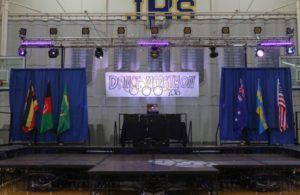 not only the students, but also local businesses to donate. People are more inclined to give when the change is something they can see.”
not only the students, but also local businesses to donate. People are more inclined to give when the change is something they can see.” 
 Why can’t I be a leader like them, and do a real Impact in this world?, Was the first question that popped in my head, and actually you know what, students can make real Impact and their voices can be valued on the same basis as those who are currently working in UN. This is exactly why I appreciate and admire organizations such as Salam Centre for Peace and MUN Impact, as they truly give out the confidence and MUN Identity through their activities. Couple of years ago, I could not even speak out loud at my school, as I was afraid someone is gonna judge me based on what I say, but it was time to change that, and actually we need to change this in our world, as without students we cannot build our future.
Why can’t I be a leader like them, and do a real Impact in this world?, Was the first question that popped in my head, and actually you know what, students can make real Impact and their voices can be valued on the same basis as those who are currently working in UN. This is exactly why I appreciate and admire organizations such as Salam Centre for Peace and MUN Impact, as they truly give out the confidence and MUN Identity through their activities. Couple of years ago, I could not even speak out loud at my school, as I was afraid someone is gonna judge me based on what I say, but it was time to change that, and actually we need to change this in our world, as without students we cannot build our future.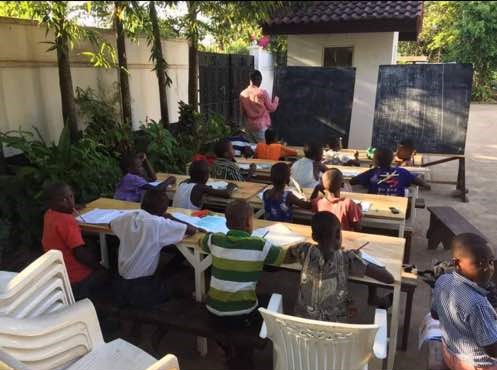
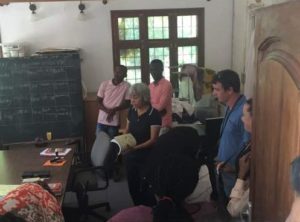 Head of Marketing for FAC, Vijay Krishnan explained that, “the self-sustaining service activity that works hand in hand with a local beneficiary, CHIPUA, has managed to donate money for the completion of secondary education of 7 girls (including textbooks, any needed stationary, tables and chairs) through sponsors and fundraisers.” Project president Veer Visaria said that “MUN has given me insight on pressing global issues, and taught me how to diplomatically lead a group of inspired young delegates.” This year the service group has raised $4000 from two fundraising activities, and now sponsor an additional six girls for education.
Head of Marketing for FAC, Vijay Krishnan explained that, “the self-sustaining service activity that works hand in hand with a local beneficiary, CHIPUA, has managed to donate money for the completion of secondary education of 7 girls (including textbooks, any needed stationary, tables and chairs) through sponsors and fundraisers.” Project president Veer Visaria said that “MUN has given me insight on pressing global issues, and taught me how to diplomatically lead a group of inspired young delegates.” This year the service group has raised $4000 from two fundraising activities, and now sponsor an additional six girls for education.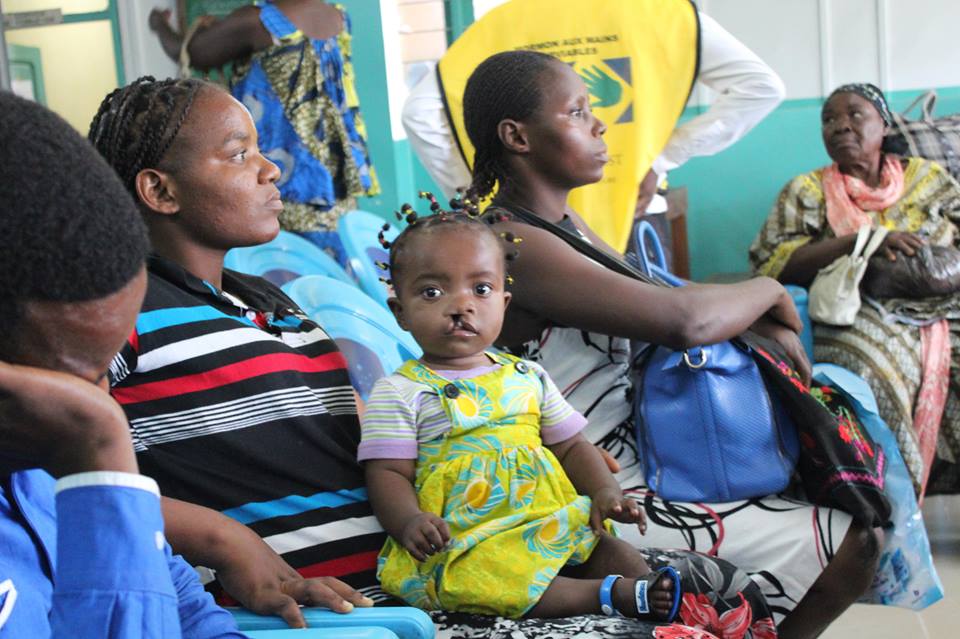
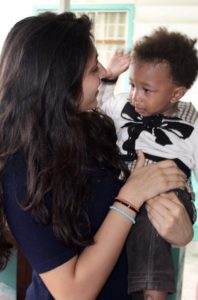
 We started by organising small scale fundraisers to raise awareness about the club and the NGO. At the end of the school year, we organised a large dinner gala for the expatriate community and government officials in the DRCongo, raising about $50,000 that year for the upcoming mission. The gala became an annual trend; we organised one in 2016 and 2017, improving the structure, entertainment, decorations, and organisation each time. Everything from making the brochures and tickets, to renting out the hall and calling photographers, to approaching companies to collect sponsorships was done by students while simultaneously balancing school work.
We started by organising small scale fundraisers to raise awareness about the club and the NGO. At the end of the school year, we organised a large dinner gala for the expatriate community and government officials in the DRCongo, raising about $50,000 that year for the upcoming mission. The gala became an annual trend; we organised one in 2016 and 2017, improving the structure, entertainment, decorations, and organisation each time. Everything from making the brochures and tickets, to renting out the hall and calling photographers, to approaching companies to collect sponsorships was done by students while simultaneously balancing school work. While my time with Operation Smile developed my professional development skills and taught me the importance of teamwork, it was most impactful in helping me learn about myself. Over the two and a half years I was president, I was able to realise that I am most passionate about international affairs, sustainable development, and working with children. I was also able to learn about my abilities as a leader, which developed over time through trial and error.
While my time with Operation Smile developed my professional development skills and taught me the importance of teamwork, it was most impactful in helping me learn about myself. Over the two and a half years I was president, I was able to realise that I am most passionate about international affairs, sustainable development, and working with children. I was also able to learn about my abilities as a leader, which developed over time through trial and error.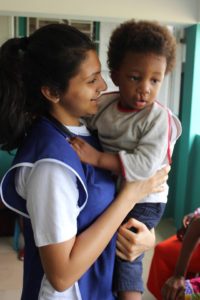 Operation Smile helped me with MUN as I was able to practice my public speaking skills and teamwork skills. Guiding a team to host an event facilitated the process of combining resolutions and discussing issues with strangers at the THIMUN Conference. Additionally, the two worked hand in hand to help me find my passion and realize my strengths as a leader and personally. Overall, the skills I gained through Operation Smile were relevant in every part of my life and still help me today in university. The experience taught me how to multitask, organise large scale events, manage my time efficiently, and reflect; skills applicable and necessary for any career path and any minute task. Even today, as a college student, in the interviews I’ve had, I speak about Operation Smile because I attribute much of what I have learned about myself as a person, leader, and my passion to my experience with the student club.
Operation Smile helped me with MUN as I was able to practice my public speaking skills and teamwork skills. Guiding a team to host an event facilitated the process of combining resolutions and discussing issues with strangers at the THIMUN Conference. Additionally, the two worked hand in hand to help me find my passion and realize my strengths as a leader and personally. Overall, the skills I gained through Operation Smile were relevant in every part of my life and still help me today in university. The experience taught me how to multitask, organise large scale events, manage my time efficiently, and reflect; skills applicable and necessary for any career path and any minute task. Even today, as a college student, in the interviews I’ve had, I speak about Operation Smile because I attribute much of what I have learned about myself as a person, leader, and my passion to my experience with the student club.
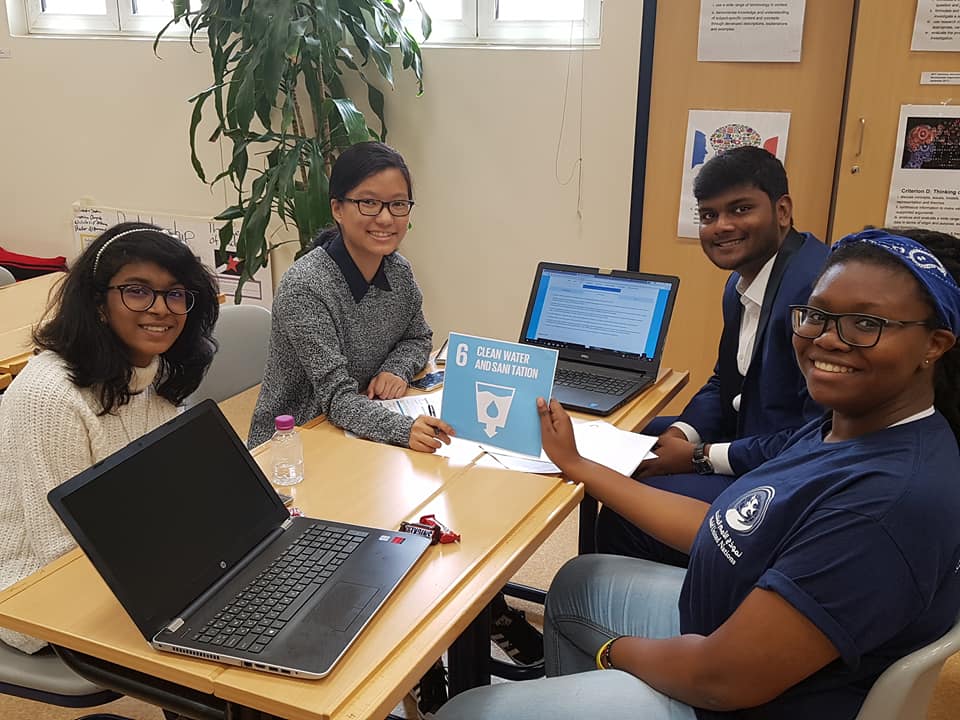
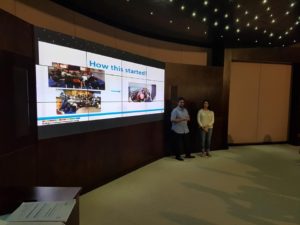 THIMUN Qatar hosted its first MUN Impact Student Summit on March 17. The gathering of MUN leaders from across Qatar met to plan ways that Model UN in the country could begin to focus on action in support of the SDGs, to move the words off of resolutions and into ACTION. Thirty seven students spent the morning reviewing the mission and vision of MUN Impact, and exploring resources on the MUN Impact website.
THIMUN Qatar hosted its first MUN Impact Student Summit on March 17. The gathering of MUN leaders from across Qatar met to plan ways that Model UN in the country could begin to focus on action in support of the SDGs, to move the words off of resolutions and into ACTION. Thirty seven students spent the morning reviewing the mission and vision of MUN Impact, and exploring resources on the MUN Impact website.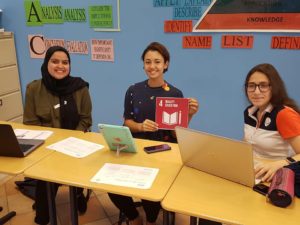 Students were then randomly selected and put into groups of three and given an SDG. Working quickly through the MUN Impact Planning tool, they step by step devised a hypothetical action plan with a generous and very hypothetical QAR 20,000 budget ($5,500 USD) They had to locate and identify the Targets related to their SDG, then link one to an issue in their local community. They then brainstormed ideas on how a student-initiated campaign or project might lead to the development of a successful event, and had to identify obstacles, key stakeholders, permissions and timelines necessary for an event to take place.
Students were then randomly selected and put into groups of three and given an SDG. Working quickly through the MUN Impact Planning tool, they step by step devised a hypothetical action plan with a generous and very hypothetical QAR 20,000 budget ($5,500 USD) They had to locate and identify the Targets related to their SDG, then link one to an issue in their local community. They then brainstormed ideas on how a student-initiated campaign or project might lead to the development of a successful event, and had to identify obstacles, key stakeholders, permissions and timelines necessary for an event to take place.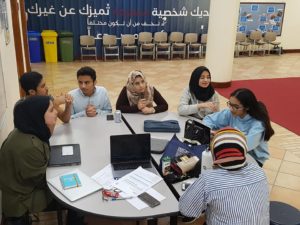 After lunch, students self-selected themselves into groups around areas of mutual interest. The process of identifying a Goal, a Target and linking that to a community issue was repeated, with a longer opportunity to lay out a plan of action, which included spirited discussion on what the goal of a program would look like, necessary approvals and permissions likely needed from school administrators, and a step by step timeline on how the program would organized. This was the first in-depth opportunity to have students work with the MUN Impact Planning Tool, helping us to refine the tool as a user-friendly tool for planning SDG-related campaigns and projects.
After lunch, students self-selected themselves into groups around areas of mutual interest. The process of identifying a Goal, a Target and linking that to a community issue was repeated, with a longer opportunity to lay out a plan of action, which included spirited discussion on what the goal of a program would look like, necessary approvals and permissions likely needed from school administrators, and a step by step timeline on how the program would organized. This was the first in-depth opportunity to have students work with the MUN Impact Planning Tool, helping us to refine the tool as a user-friendly tool for planning SDG-related campaigns and projects.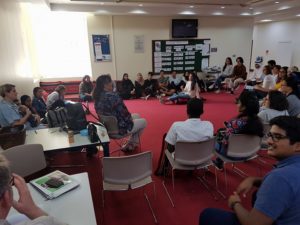 After four hours of intense activity, participants circled back around to talk about the larger relevance MUN Impact might have in their club, and in the THIMUN Qatar community at large. And the room became electrified with discussions about action, inclusion and general agreement that everyone should be involved in promoting the SDGs in Qatar. The closing minutes reminded everyone that this generation, when given the opportunity, is a generation of ACTION, and in this case, ACTION to support the SDGs.
After four hours of intense activity, participants circled back around to talk about the larger relevance MUN Impact might have in their club, and in the THIMUN Qatar community at large. And the room became electrified with discussions about action, inclusion and general agreement that everyone should be involved in promoting the SDGs in Qatar. The closing minutes reminded everyone that this generation, when given the opportunity, is a generation of ACTION, and in this case, ACTION to support the SDGs.